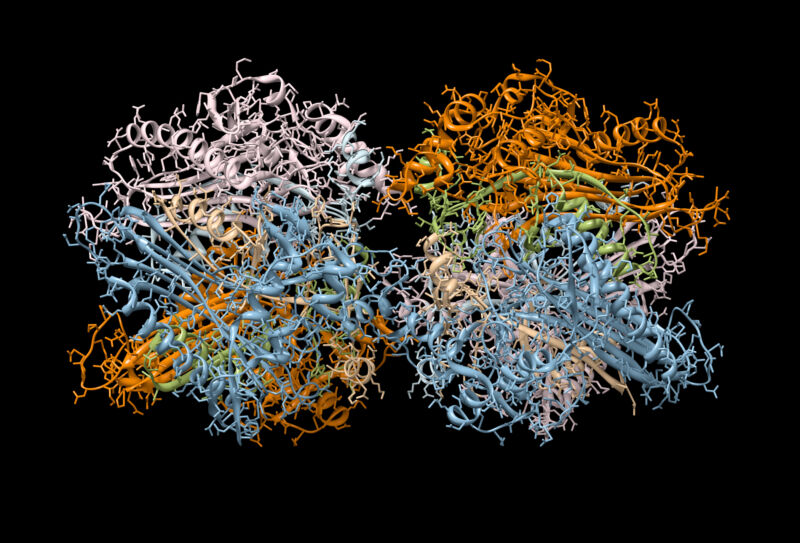Antibodies are incredibly useful. Lots of recently developed drugs rely on antibodies that bind to and block the activity of specific proteins. They're also great research tools, allowing us to identify proteins within cells, purify both proteins and cells, and so on. Therapeutic antibodies have provided our first defenses against emerging viruses like Ebola and SARS-CoV-2.
But making antibodies can be a serious pain, because it involves getting animals to make antibodies for us. You need to purify the protein you want the antibodies to stick to, inject it into an animal, and get the animal to produce antibodies as part of an immune response. From there, you either purify the antibodies, or to purify the cells that produce them. It's time-consuming, doesn't always work, and sometimes produces antibodies with properties that you're not looking for.
But thanks to developments in AI-based protein predictions, all that hassle might become unnecessary. A recently developed diffusion model for protein structures has been adapted to antibody production and has successfully designed antibodies against flu virus proteins.
Making the antibody of your choice
Humans (and many other mammals) make antibodies that are four-protein complexes composed of two heavy and two light proteins. Both heavy and light proteins have constant regions, which are the same or similar among all antibodies produced. They also both have a variable region, which is unique to every antibody. It's the variable region that's responsible for recognizing proteins in viruses and other pathogens. Some other mammals, like camels, skip the light proteins and have antibodies that are simply a pair of heavy proteins (which still recognize pathogens via the variable regions of the heavy proteins).
The body doesn't know what proteins it will eventually need to recognize. So, it simply makes a lot of antibody-producing cells, each with a unique combination of heavy and light variable regions. When any of these cells run into the protein their antibodies recognize, they start dividing and produce a lot of the needed antibody. It takes time for these cells to mature and additional time to purify them. Plus, there's no guarantee that the specific combination of variable regions will be the optimal one for recognizing a protein.
The only way to avoid the hassle and uncertainty of getting an animal to generate antibodies for us is to figure out how to design antibodies that will recognize what we want. And that just hasn't been possible. We don't understand enough about how proteins fold up into a three-dimensional configuration to design one that will adopt a shape of our choice—one that wraps around a specific target.
We still don't really understand enough to do that intentionally. But in recent years, we've trained AI software to take a string of amino acids and accurately predict the three-dimensional structure that this protein would adopt. And, more recently, people have figured out how to merge these with diffusion models to create software that can design proteins that will adopt a specified configuration.
It turns out that this approach can be adopted for designing antibodies.



3175x175(CURRENT).thumb.jpg.b05acc060982b36f5891ba728e6d953c.jpg)
Recommended Comments
There are no comments to display.
Join the conversation
You can post now and register later. If you have an account, sign in now to post with your account.
Note: Your post will require moderator approval before it will be visible.